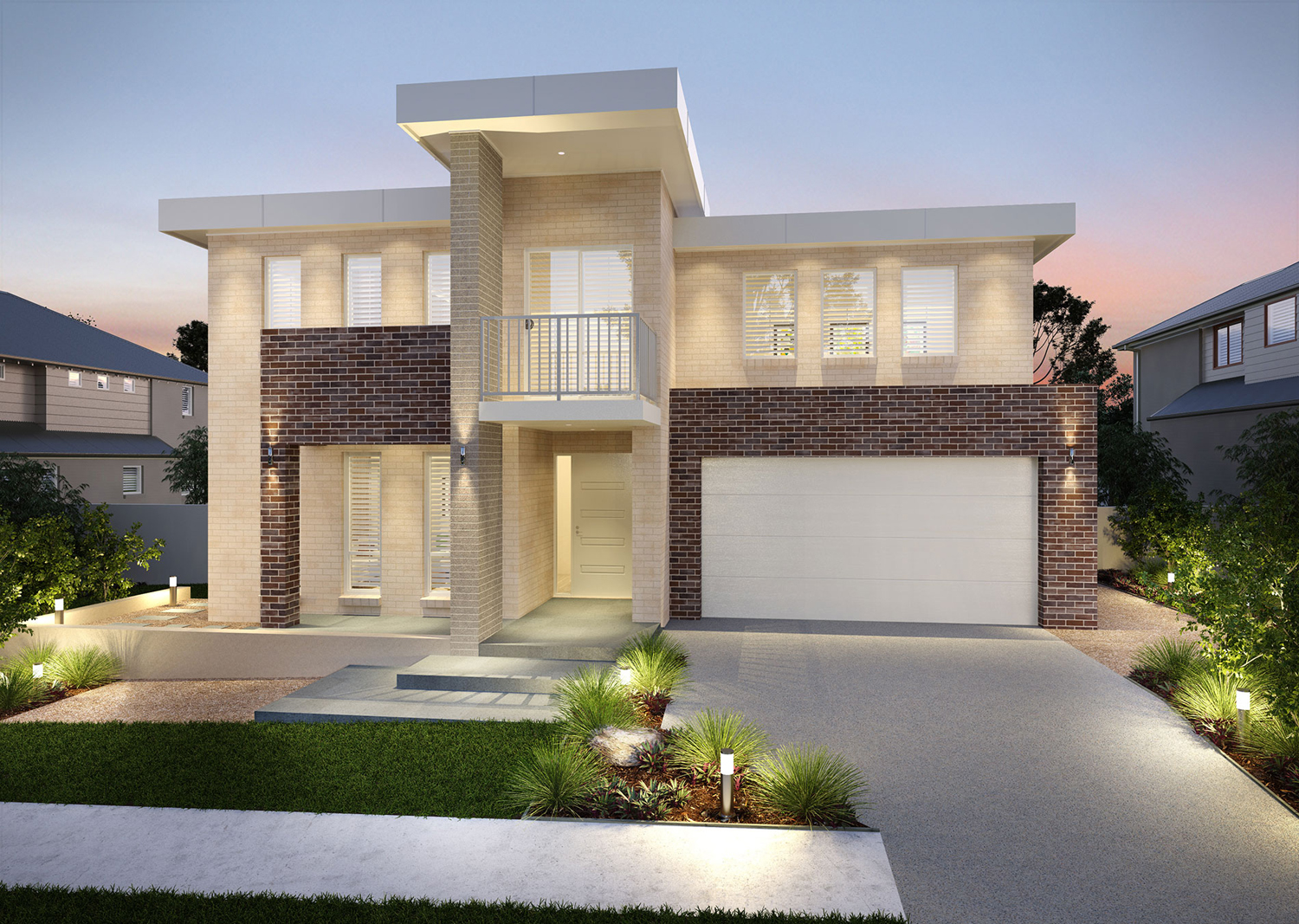So the building work is complete, the tradesmen’s grotty bootmarks have all been cleaned away and the new furniture has been carefully placed around your stylish new space. All that’s left to do is dress the windows. And, although at this final stage of your renovation or building project you may be tempted to rush into a fast and easy decision, simply to get the job done — don’t.
Your choice of window dressing has a huge impact on the overall look and feel of a room. The right choice can enhance a design and add to the style of a space. The wrong choice can undo all your hard work and that of your architect or designer.
And it’s not just aesthetics that your choice of window dressing can affect. Security, ventilation, noise reduction and internal air temperature are all factors that will be affected when you decide how to dress your windows. So before you make any decisions, it’s important to be well informed.
Factors to consider
Purpose
Consider what the actual purpose of the window dressing is to be. Is it to block out light? To provide privacy? To enhance a mood or feel of a space? Knowing what function you need the dressing to perform is essential to deciding which dressing to choose. A sheer curtain will enhance the mood of a romantic-styled bedroom but it will hardly offer privacy, while timber shutters may provide ample privacy but will not enhance the look of a space filled with contemporary-style furniture.
Style
Ensure your choice is in keeping with the room’s style. Look at the colouring and design choices made in relation to the walls, flooring and furniture in the room and make your dressing choice accordingly. Decide on colours that will either contrast with or complement the colour scheme, not clash with it.
Outdoors
Remember to consider the view from the outside when choosing your dressings. Although you may wish to use different styles of dressings in different rooms of the home, consider the impact this will have on the view from the outside.
Placement
Look at where the windows are situated. If they face the street, privacy and security must be considered. If they face a garden or private area, privacy may not be so important. Look also at which direction the window faces and when the room is generally occupied. Is it a bedroom that gets lots of sun in the morning, or a living area with limited natural light in the afternoon. A clever choice in window dressings can counteract a room’s shortcomings or enhance its natural features.
Use
Who is going to use these dressings? Will it be adults (who are capable of dealing with small cords and ties) or children, who will need a simpler and safer alternative. Will there be grubby little hands marking your stunning white curtains? These factors need to be considered in order to avoid making an unrealistic choice or one that’s impossible to maintain.
Cost
The cost of window dressings varies enormously, so it’s essential to know all your options and shop around before making any final decision. And remember, the cheaper alternatives may not always work out cheaper in the long run. It’s better to spend a little extra on the product that’s right for you than to choose an inferior option that will hinder your enjoyment of the space. Alternatively, keep in mind that sometimes a simple — and cost-effective — solution is the best. It’s a good idea to be aware of prices but not dictated by them.
Window dressing choices
Timber venetians
Extremely popular with homeowners today, timber venetians are both practical and stylish. Offering great air and light flow, timber venetians help to regulate the temperature of a room as well as harness natural light. Generally made from western red cedar or Tasmanian oak, timber venetians can be oiled or lacquered and can be made to fit virtually any sized window. Special treatments may need to be applied if they are to be used in a high-humidity area or region.
Timber venetians are great for almost any room, from the bathroom to a main living area. Though timber venetians are considered a high-cost dressing, there are also faux-timber or synthetic blinds available for a fraction of the cost. These can be used if your budget is tight or if high humidity is a problem. Timber venetians are simple to use but a drag to dust!
Plantation shutters
As with timber venetians, plantation shutters are both practical and stylish and are particularly well suited to heritage homes, Queenslanders and beach houses. Generally made from western red cedar or Tasmanian oak, plantation shutters can be oiled or lacquered and made to fit virtually any sized window. As with timber venetians, special treatments may need to be applied if they are to be used in a high-humidity area or region. While the louvred section offers you the convenience to control the light and air flow, it also makes dusting a time-consuming chore!
Pleated blinds
Pleated blinds are fabric blinds that are generally used in conjunction with curtains. These blinds are good for living areas such as lounge rooms or bedrooms, as the blinds can be custom made to suit the decor. The blinds are not as versatile as venetians or shutters as they offer only two usage options: up or down. However, they do offer reasonable insulation and privacy. As long as the room is well ventilated and kept clean, these blinds are relatively easy to maintain but you must consider fading when choosing a fabric.
Roman blinds
Romans are considered a design classic. They’re simple and easy to use and can suit any decor (they’re also relatively easy to make at home). Roman blinds are suitable for almost any room but the style of the room must be considered when choosing fabric. Roman blinds can be made to fit virtually any sized
window and, depending on size and choice of fabric, are a cost-efficient window dressing. Roman blinds offer satisfactory insulation and although not as versatile for air and light flow, they can be made in a sheer or light fabric to create a stylish infusion of light that’s perfect for areas where natural light is wanted but privacy is an issue.
Aluminium venetians
Aluminium venetians are enjoying resurgence in popularity thanks to improved technology and an increased range of styles, finishes and colours. Available to fit a variety of window sizes, aluminium venetians offer good air and light flow, which makes them helpful in regulating the temperature of the room as well as harnessing natural light. Aluminium venetians can suit almost any room as they have no definite style of their own. The slats are available in a variety of sizes but need to be treated with a certain amount of care as they can dent or bend, making them — and the room they’re in — look worn and unkempt. As with any venetian, keeping them clean is no easy task!
Roller blinds
The simple things in life are often the best, and nowhere is this clearer than with roller blinds. The design of the roller blind hasn’t really changed since its beginning — it’s still fabric wrapped around a roller — but new technology has resulted in a wider choice of fabrics and materials and increased sophistication of the roller mechanisms (which range from the standard roller to a mechanised, remote-controlled type). Roller blinds can be made to fit almost any size window and can be custom made in a fabric to suit virtually any decor. Roller blinds are also available in new UV-resistant materials. Roller blinds are relatively easy to maintain but offer little in the way of insulation.
Vertical blinds
Vertical blinds are suitable for both windows and sliding doors. They offer good light and air flow and are available in a variety of sizes. Vertical blinds provide privacy but limited insulation. As with fabric blinds, vertical blinds are available in a huge range of colours, patterns and textures. Improved technology has brought vertical blinds a long way from the days where they became a tangled mess at the touch of a hand, though they do still tend to sway when opened or closed.
Honeycomb blinds
Honeycomb blinds are a modern variation on venetian blinds. The double-cell — or honeycomb — effect offers superior insulation and can block out 99 per cent of the sun’s UV rays (depending on fabric choice). Honeycomb blinds are available in a huge range of colours and are considered an energy-efficient choice in window coverings as the insulating qualities can reduce heating and cooling costs.
Curtains
The variety of curtains available is really as wide as your imagination will allow. This is perhaps the most versatile option for window coverings as — depending on your chosen style or fabric — they can be custom made to suit any room. Fabric choice will also dictate the amount of insulation, privacy and airflow the curtain offers: a heavy drape will provide superior privacy and insulation, while a sheer fabric will allow airflow and natural light into a room. Consideration must be given to fading and curtains need regular maintenance to stay looking fresh.





